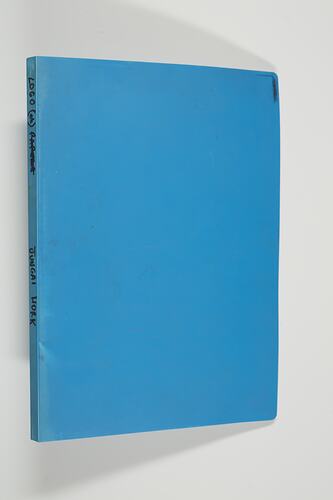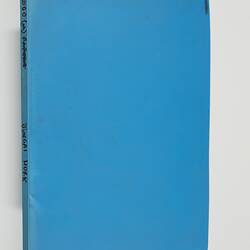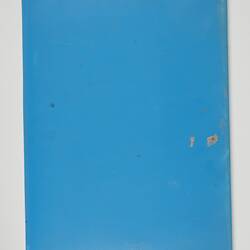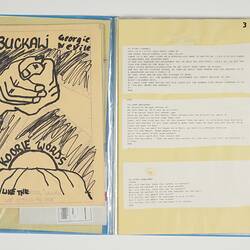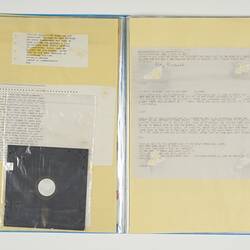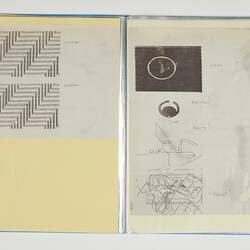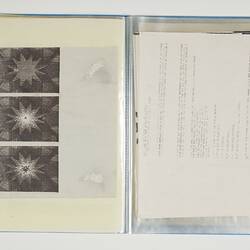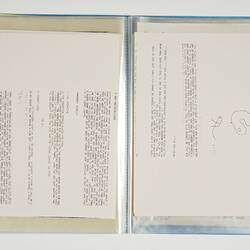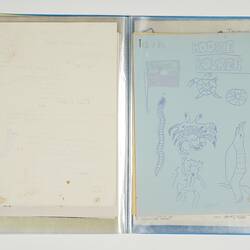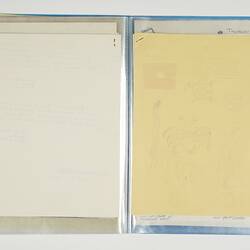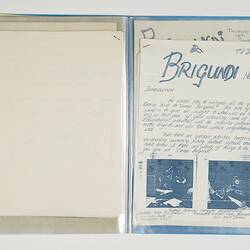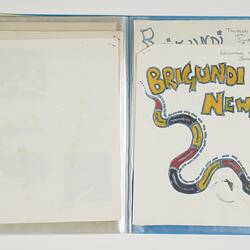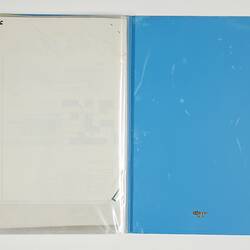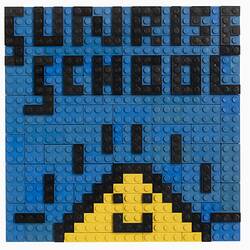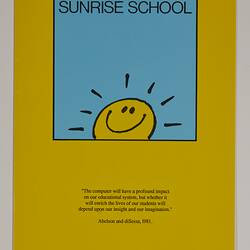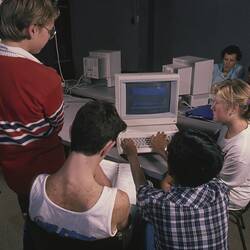Summary
A folder containing examples of work produced by First Peoples students from Braiakalung, Wemba Wemba, Kurung, at school Camp Jungai in Rubicon, near Eildon, in 1984, and Camp Brigundi, Merricks, in 1985.
These camps were organised by the Victorian Aboriginal Education Consultative Group, first established in 1976. Operating as educational transition camps, they were offered to assist students in as they transitioned from grade 6 to year 7. The scrapbook documents Sunrise computer sessions at the camps run by Dr. Liddy Nevile and her team. It includes work the students did on computers including story writing and programming. Each camp produced a newsletter in 1984 that was called the 'Koorie Kourier' and this scrapbook includes the 1st and 2nd editions. In 1985 it was called Brigundi News and this scrapbook includes the 7 January, 9 January and 10 January editions.
This object forms part of the Sunrise Collection which includes educational robots, software and multimedia recordings of teachers and students, mainly in Victoria, exploring new possibilities with computer programming.
Physical Description
A loose-leaf folder of many A4 pages of roneo-graphed or printed work on white and coloured pages, encased in 20 clear plastic sleeves, bound in a blue-plastic folder. It also includes 2 computer floppy discs for the ATARI computer in paper sleeves and in a clear plastic zip-bag.
More Information
-
Collection Names
-
Collecting Areas
Information & Communication, Childhood, Social Spaces & Youth
-
Used By
-
Co-ordinator of Event
Victorian Aboriginal Education Consultative Group, 1984-1985
-
Person Named
Angie Collyer, 1984
Mentioned in the Koorie Kourier Blue Cover -
Person Named
Sherrie Farrell, 1984
Mentioned in the Koorie Kourier Blue Cover -
Person Named
Nicole James, 1984
Mentioned in the Koorie Kourier Blue Cover -
Person Named
Karen Sebastian, 1984
Mentioned in the Koorie Kourier Blue Cover -
Person Named
Tammy Lovett, 1984
Mentioned in the Koorie Kourier Blue Cover -
Person Named
Jack Kirby, 1984
Mentioned in the Koorie Kourier Blue Cover -
Person Named
Fred Sebastian, 1984
Mentioned in the Koorie Kourier Blue Cover -
Person Named
Ricky James, 1984
Mentioned in the Koorie Kourier Blue Cover -
Person Named
Ambrose G. Brown, 1984
Mentioned in the Koorie Kourier Blue Cover -
Person Depicted
Stephen Jackson, 1984
Mentioned in the Koorie Kourier Blue Cover -
Person Named
Richard Williams, 1984
Mentioned in the Koorie Kourier Blue Cover -
Person Named
Peter Walker, 1984
Mentioned in the Koorie Kourier Blue Cover -
Person Named
Brendan Kirby, 1984
Mentioned in the Koorie Kourier Yellow Cover -
Person Named
Jason Brown, 1984
Mentioned in the Koorie Kourier Yellow Cover -
Person Named
Darren Chatfield, 1984
Mentioned in the Koorie Kourier Blue Cover -
Person Named
Jill Johnson, 1985
Mentioned in the Brigundi News 7th Jan edition -
Person Named
Lee Clarke, 1985
Mentioned in the Brigundi News 7th Jan edition -
Person Named
Lelly Lambett, 1985
Mentioned in the Brigundi News 7th Jan edition -
Person Named
-
Inscriptions
On spine of folder: 'LOGO (etc) JUNGAI WORK'
-
Classification
-
Category
-
Discipline
-
Type of item
-
Keywords
Robots, Robotics, Robot Components, Computers, Computer Software, Computer Games, Computer Peripherals, Electronic Learning Aids, Education Programs, Education Kits, Educational Technology, Schools, Technology, Education, microworlds, constructionism
